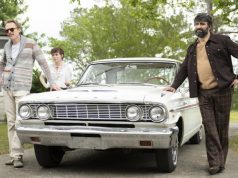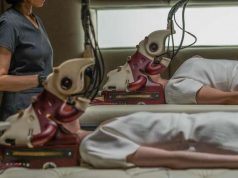Though “Chain Camera” presents many views of many different teen-agers, one theme is overriding: The kids are all right.
Plenty of TV shows and movies purport to show the “real teen experience,” but these usually make the kids out to be either hopelessly lost or unrealistically perfect. Even shows that attempt to get to the heart of the matter by interviewing teens directly (rather than presenting fictional stories) usually fall short because, while it’s the kids’ actual voices, they are, after all, being interviewed by grown-ups. The only way to see what high school students are REALLY like would be to see them with no adults around.
“Chain Camera” does this marvelously. In 1999, 10 digital video cameras were given to 10 students at John Marshall High School in Los Angeles. After a week, the cameras were passed on to other students, and so on, for a year. Sixteen students have been chosen, their seven days of footage distilled into the segments that comprise “Chain Camera.” The result is a riveting, hopeful and heartbreaking film.
Rosemary, a girl of Cambodian descent who has toyed with bulimia and homelessness and wants to become a stripper as soon as she’s 18. Tim lives with his mother and brother in a one-bedroom apartment — and yet, each member of the family has his own TV set. Cinammon is lesbian and has a girlfriend. Winfred counts football as his one major chance at success, but is prevented from playing due to a low math grade. Stephanie is poignantly close to her obese, unhealthy father. Amy and Christian are a sweet couple who seem to be legitimately in love. Jesse has an alcoholic mother and masks his pain by getting involved in numerous political causes and sardonically videotaping amusing street signs. The list goes on.
While the kids have home lives of various degrees of happiness, and while their ethnicities are as diverse as their interests, one thing they have in common is optimism. Not a shiny, “Pollyanna” optimism, but an honest belief that life can be worth living.
These are good kids. Screwed up sometimes, sure, but good. Even Lisa and Alan, who have an explicit conversation about oral sex and attempt to show the proper technique using a condom-clad banana, exude more sweetness than sensuality: Their visual aid makes them giggle infectiously so much they can’t even begin the lesson.
Another thing that struck me in watching the film was how devoted teens are to having fun. This is no surprise, obviously, but as we see life from their perspective, we realize how important fun is to them. Tim lives in that tiny apartment and has many reasons to be depressed, but makes sure to enjoy himself by reenacting WWF events with his guy friends. Rosemary dances to escape her troubles. Stephanie’s sense of humor about her father is a wonderful moment in the film.
Certainly there are teens who shoot each other, have promiscuous sex and do plenty of other things to make us worry about leaving the world in their hands. But the cross-section shown here convinces me that as a whole, they’re not so bad. They’re smart. They’re savvy. For as world-aware as they are, they are still naive and, in their way, rather innocent. With a little guidance, they’ll be as good as we could have hoped.
A (1 hr., 30 min.; )





